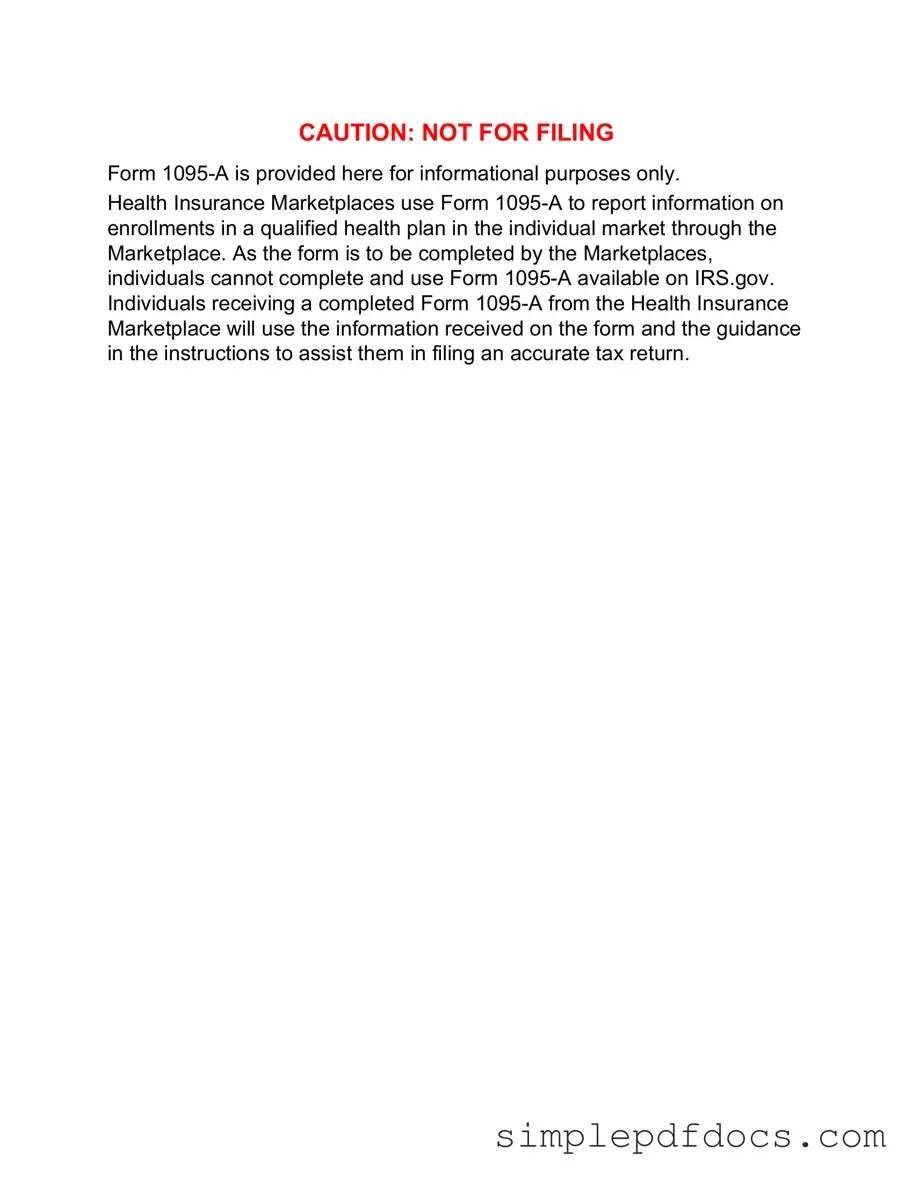The IRS 1095-A form plays a crucial role in the landscape of health insurance and tax reporting for individuals who have obtained coverage through the Health Insurance Marketplace. This form provides essential information regarding the health insurance plans purchased, including details about the coverage period, the amount of premium tax credit, and the specific months during which the individual was covered. Understanding the 1095-A is vital for taxpayers, as it directly impacts their tax returns and eligibility for premium tax credits. When filing taxes, individuals must use the information on this form to complete Form 8962, which reconciles any advance payments of the premium tax credit with the actual credit amount. Missing or incorrect information on the 1095-A can lead to complications in tax filings, making it imperative for taxpayers to review the form carefully. Additionally, the form serves as a record of the health coverage that meets the Affordable Care Act requirements, thus influencing compliance with health insurance mandates. In essence, the 1095-A is not just a tax document; it is a key element in ensuring individuals navigate their health insurance responsibilities effectively.
